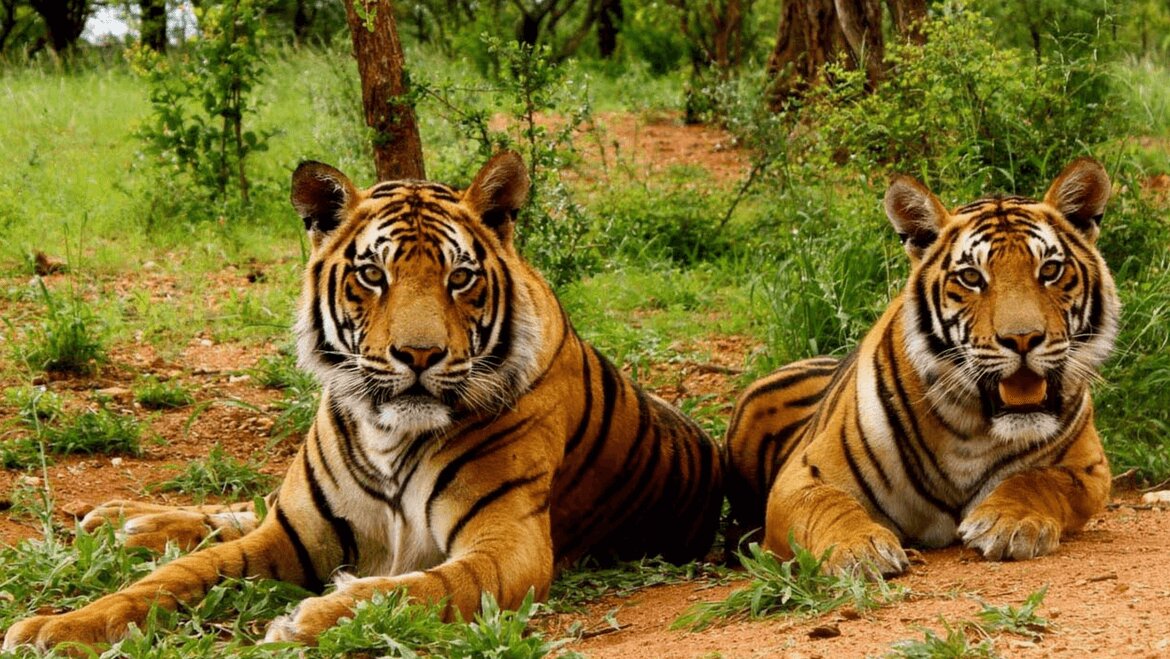Tiger Census 2018: Guinness Book of World Records
Why in News
India’s 2018 Tiger Census has made it to the Guinness Book of World Records for being the world’s largest camera trapping wildlife survey.
- India has also fulfilled its resolution to double the Tiger numbers made at St. Petersburg Tiger Summit in 2010, before the target year of 2022.
- The tiger numbers in India have increased from around 1500 in 2010 to 2976 in 2020.
Key Points
- Comprehensive: The fourth cycle of the Tiger Census 2018, conducted in 2018-19 is the most comprehensive in terms of both resource and data recorded.
- It counted 2976 tigers which is 75% of the global tiger population.
- The census is done quadrennially (every four years) by the National Tiger Conservation Authority (NTCA) with technical help from the Wildlife Institute of India.
- It is done with cooperation from the state Forest Departments and partners.
- Methods:
- Camera traps were placed at multiple locations across different sites and surveyed an effective area of 121,337 square kilometres.
- Camera Traps are outdoor photographic devices fitted with motion sensors that start recording when an animal passes by.
- It also conducted extensive foot surveys that sampled habitat plots for vegetation and prey dung.
- Camera traps were placed at multiple locations across different sites and surveyed an effective area of 121,337 square kilometres.
- Identification: From these photographs 83% of the total tiger population were identified using stripe-pattern-recognition software.
- The software helps to match a new image of a tiger already in the database, based on the pattern of stripes.
Project Tiger
- It was launched in 1973 with 9 tiger reserves for conserving our national animal, the tiger.
- It is an ongoing Centrally Sponsored Scheme of the Ministry of Environment, Forests and Climate Change.
- Currently, the Project Tiger coverage has increased to 50 Tiger reserves, spread out in 18 tiger range states which amounts to around 2.21% of the geographical area of our country.
- The tiger reserves are constituted on a core/buffer strategy. The core areas have the legal status of a national park or a sanctuary, whereas the buffer or peripheral areas are a mix of forest and non-forest land, managed as a multiple use area.
- The NTCA was launched in 2005, following the recommendations of the Tiger Task Force. It is a statutory body of the Ministry, with an overarching supervisory/coordination role, performing functions as provided in the Wildlife (Protection) Act, 1972.
- M-STrIPES (Monitoring System for Tigers - Intensive Protection and Ecological Status) is an app based monitoring system, launched across Indian tiger reserves by the NTCA in 2010.
- The system would enable field managers to assist intensity and spatial coverage of patrols in a geographic information system (GIS) domain.
- Scientific Name: Panthera tigris
- Indian Sub Species: Panthera tigris tigris.
- Habitat: It stretches from Siberian temperate forests to subtropical and tropical forests on the Indian subcontinent and Sumatra.
- It is the largest cat species and a member of the genus Panthera.
- Traditionally eight subspecies of tigers have been recognized, out of which three are extinct.
- Bengal Tigers: Indian Subcontinent
- Caspian tiger: Turkey through central and west Asia (extinct).
- Amur tiger: Amur Rivers region of Russia and China, and North Korea
- Javan tiger: Java, Indonesia (extinct).
- South China tiger: South central China.
- Bali tiger: Bali, Indonesia (extinct).
- Sumatran tiger: Sumatra, Indonesia.
- Indo-Chinese tiger: Continental south-east Asia.
- Designated as the National Animal of India, Bengal Tiger is most recognisable for its dark vertical stripes on orange-brown fur with a lighter underside.
- Importance: Tigers are terminal consumers in the ecological food pyramid, and their conservation results in the conservation of all trophic levels in an ecosystem.
- Threats: Habitat destruction, habitat fragmentation and poaching.
- Protection Status:
- Indian Wildlife (Protection) Act, 1972: Schedule I
- International Union for Conservation of Nature (IUCN) Red List: Endangered.
- Convention on International Trade in Endangered Species of Wild Fauna and Flora (CITES): Appendix I.
- Tiger Reserves in India
- Total Number: 50
- Largest: Nagarjunsagar Srisailam Tiger Reserve, Andhra Pradesh
- Smallest: Orang National park, Assam
